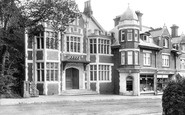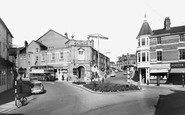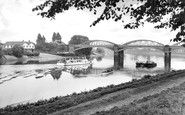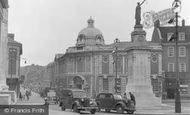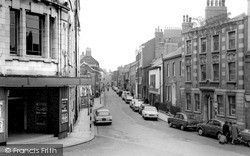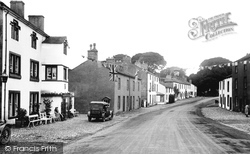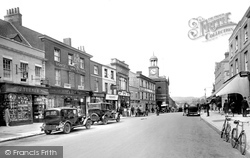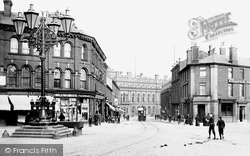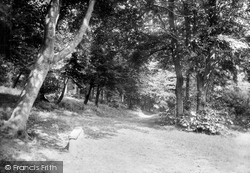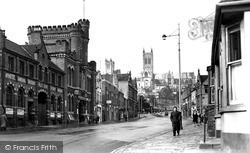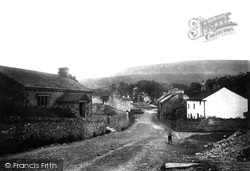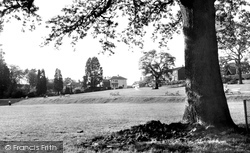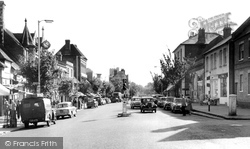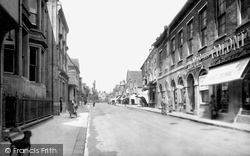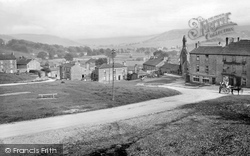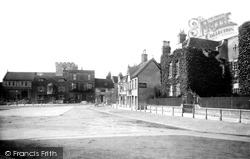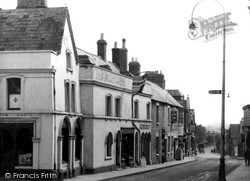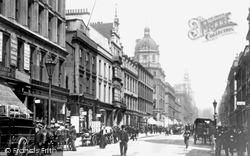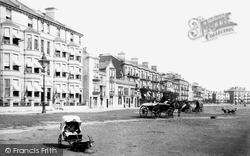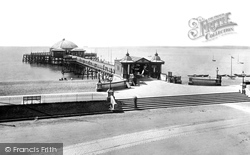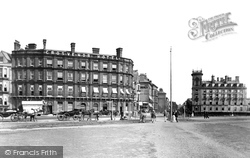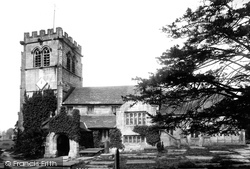Places
2 places found.
Those places high-lighted have photos. All locations may have maps, books and memories.
Photos
12 photos found. Showing results 141 to 12.
Maps
28 maps found.
Books
Sorry, no books were found that related to your search.
Memories
653 memories found. Showing results 71 to 80.
Personal Reflections
I was born in Sandleaze, Worton in 1957. I was brought up at 1 Mill Road near the Marston boundary. I remember many things about the village especially the Rose and Crown Pub and the Mill. I remember with pride the ...Read more
A memory of Worton by
Parkstone Girls' Grammar School
This was the entrance to Parkstone Girls' Grammar school where I went from 1956, with Miss Allen as headmistress, until we moved to the present site in Sopers Lane in, I think, 1960 or 61, when these buildings were ...Read more
A memory of Poole in 1956 by
Living In Queens Avenue And Going To School
I was three when we moved to Muswell Hill in 1951. My parents had both been in the forces and it was difficult to find accommodation for a family. My grandmother knew a Mr. Wood, he was a judge. His ...Read more
A memory of Muswell Hill in 1953 by
Where I Grew Up
I lived most of my life in Sible Hedingham, as a family we moved there from London in 1962. I was just 2 years old at the time. My father Robert Farren, "Bob" as he was best known and my mother Ivy, took over the licence of ...Read more
A memory of Sible Hedingham in 1962 by
The Palace Cinema
The pub on the left of the picture was renowned for a few brawls in it's time, originally called The Globe (now known as Raferty's) I recall walking down Cambridge St and seeing a man being hurled through the window into ...Read more
A memory of Wellingborough in 1968 by
The Howard Family Of Barnes And Hammersmith
My Great-Great-Grandad, Henry Howard, lived in the early 1800’s - a time of great rural depression - and so he left his Devon home to look for work in London with the result that several generations of my ...Read more
A memory of Barnes in 1870 by
Now St Georges Square
At the junction of Williamson St, opposite the Town Hall. Local corporation bus company had a terminus halfway down Williamson St. Also Fyffes bananas had large depot opposite parked buses.
A memory of Luton in 1950 by
Military Music On Promenade And In Park
My National Service was spent in The Alamein Band of The Royal Tank Regiment which for 3 seasons, 1949 to 1952 played at Bognor Regis for two months on the promenade bandstand in the afternoons and in ...Read more
A memory of Bognor Regis in 1950 by
Hall Farm Eastham
I lived at Hall Farm during the war years and along with my sister attended the Village School where Bill Haining was headmaster. My father farmed 300 acres in and around Eastham and kept a dairy herd of about 50 cows. The farm ...Read more
A memory of Eastham in 1940
Balloon Woods Wollatton
Balloon Woods. Most people says it was a hell hole. Yes some parts of it was. But to a child it was good. There were more quite a few blocks. Some had four floors, these were called Tansley Walk, Bealey Walk, Hartington ...Read more
A memory of Wollaton in 1971 by
Captions
196 captions found. Showing results 169 to 192.
Ever since Bishop Vesey gave the Park to the people of Sutton 'in perpetuity' the inhabitants have guarded it jealously, but when Simon Luttrell applied to Parliament in 1756 to enclose part of
This ancient town crowns the steep hill above the valley of the River Kensey. Here we see the broad market place, with its pleasing facades of 17th- and 18th-century slate-roofed buildings.
Also on the street is the office of the Pontefract Park Race Company, formed in 1919 to manage the old course established in the early 18th century.
Once a year the village would be packed with visitors; they came to lean over Paythorne Bridge and watch the salmon leaping in the River Ribble.
Detail abounds in this more intimate shot of the row of shops immediately east from the Town Hall and the Greyhound Hotel. All the windows are full of offerings from floor to ceiling.
The horse-drawn tram heads off towards the Town Hall. The Sudell family can be traced back to the reign of Edward VI. They owned land in Blackburn and out at Oozebooth.
This wooded area to the north of the town was laid out and intersected with walks in the latter half of the 19th century and remain today a pleasant, if steep walk to the northern rim of the bowl
The Drill Hall (left), which was then the HQ of the 4th Battalion Royal Lincolnshire Regiment, has recently had a complete restoration; it reopened on 20 March 2004 to resume its place in the entertainment
The Drill Hall (left), which was then the HQ of the 4th Battalion Royal Lincolnshire Regiment, has recently had a complete restoration; it reopened on 20 March 2004 to resume its place in the entertainment
Henry Sudell, the last of the family to live in Blackburn, enclosed Woodfold Park, and built the Hall there.
The name Downham means 'dwelling by the hill' - the hill is obviously Pendle, which can be seen in the background.
In Victoria Park there are now facilities for BMX bikers, roller-bladers and skateboarders, complementing the existing children's paddling pool and tennis courts as well as the occasional fixture
Behind the parked van on the left are the premises once occupied by W Good's drapery and millinery shop, next to the ornate facade of the mid-Victorian Town Hall with its clock.
We are looking westwards; the building on the right was originally the Town Hall.
Once the price of lead fell after the discovery of cheaper lead from Spain, the population of Reeth halved.
Prior to this, the Old Town Hall (1780), the offices of The Hampshire Post and Pince's School obscured the view of St Peter's from the Square. In 1898 these buildings were pulled down.
Looking South to Marlborough Road The buildings to the left stood next to the Old Town Hall on the Market Square.
It was demolished in 1966, and lines to the north thereafter operated out of Queen Street; its site is now occupied by the Royal Concert Hall.
Clement Scott, who was holidaying on Hayling Island in 1897, summed up Portsmouth at the end of the 19th century: 'Municipally considered, I don't suppose that there are two smarter sea-coast
Clement Scott, who was holidaying on Hayling Island in 1897, summed up Portsmouth at the end of the 19th century: 'Municipally considered, I don't suppose that there are two smarter sea-coast
Clement Scott, who was holidaying on Hayling Island in 1897, summed up Portsmouth at the end of the 19th century: 'Municipally considered, I don't suppose that there are two smarter sea-coast
Clement Scott, who was holidaying on Hayling Island in 1897, summed up Portsmouth at the end of the 19th century: 'Municipally considered, I don't suppose that there are two smarter sea-coast
OF ALL the villages in this collection, Nether Alderley perhaps gives us the best impression of what a north-eastern Cheshire village was like before the Industrial Revolution changed both the
Car parking was also problematical, and when the former market site became available the wheels of progress began to move.
Places (2)
Photos (12)
Memories (653)
Books (0)
Maps (28)

